|
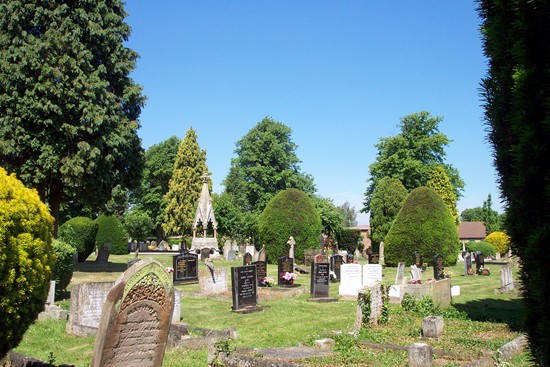 |
|
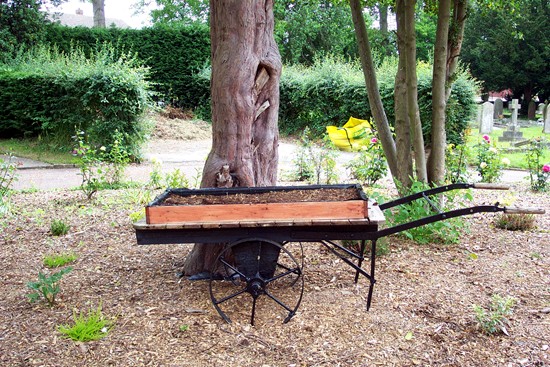 |
|
The bodies of the departed were carried from
church to cemetery by a coach or cart and from the gate to the
graveside by the parish bier. Few have survived and it is only by
chance that the Bourne bier has been preserved. It dates back to
Victorian times, almost certainly from the mid-19th century when
the cemetery was opened, and is made of cast iron and wood but was
in a poor state when the staff found it abandoned in a quiet corner of
the grounds in 2004 and recognised its previous use. They rescued it and carried out some restoration before
giving it a place of prominence at the entrance to the cemetery
where it is now used for floral displays during the summer months. |
|
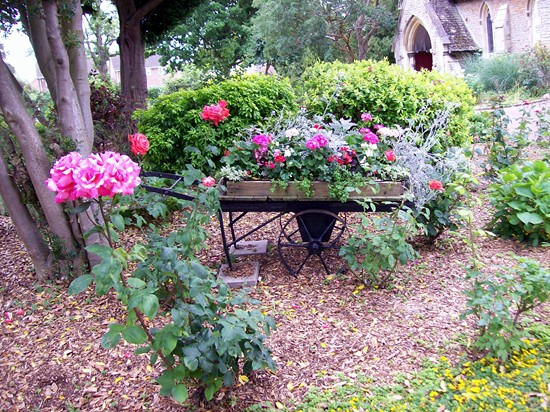 |
|
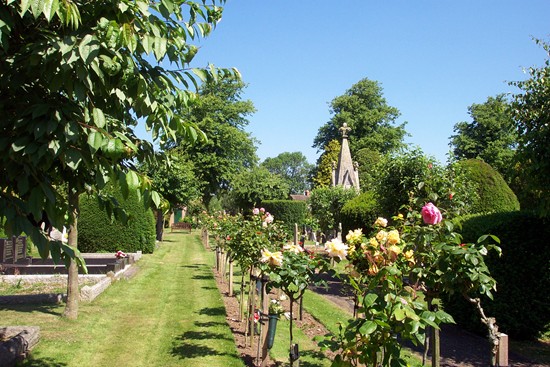 |
|
The memorial rose garden with the Ostler
memorial beyond. |
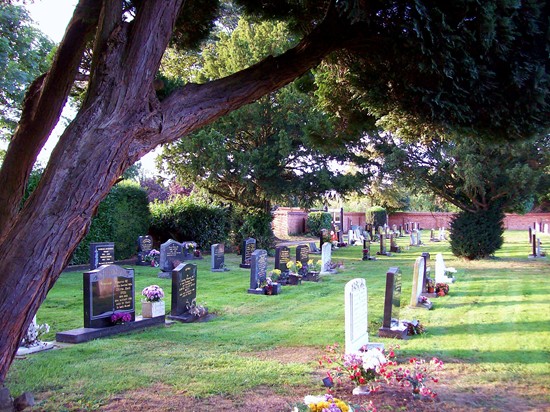 |
|
As the number of burials increased, further
land was added in 1904 and these memorial stones commemorate
interments towards the end of the old cemetery which was extended
again in 1999 beyond the hedge. |
|
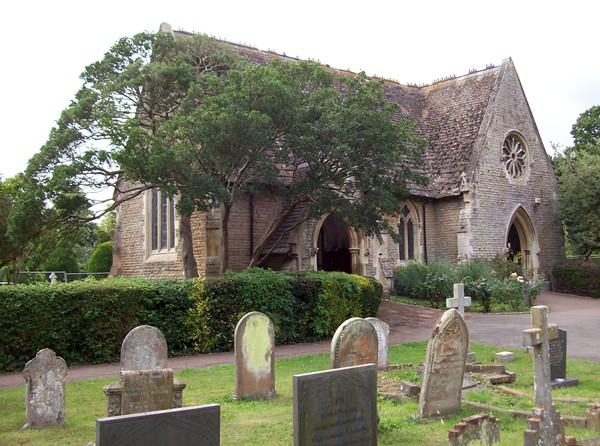 |
|
The cemetery chapel in August 2010 after
volunteers from Bourne Preservation Trust had begun clearing
debris and undergrowth from around the building, revealing the
south wall for the first time in decades. |
|
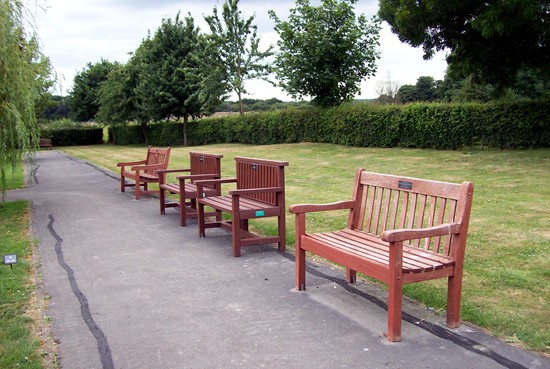 |
|
Wooden seats in memory of those who have died have become a
feature of the cemetery in recent years with engraved brass
name plates on the back rail but there are now so many lining
the main paths that Bourne Town Council has called a temporary
halt on permitting any more until a permanent policy on future
installations has been decided. |
|
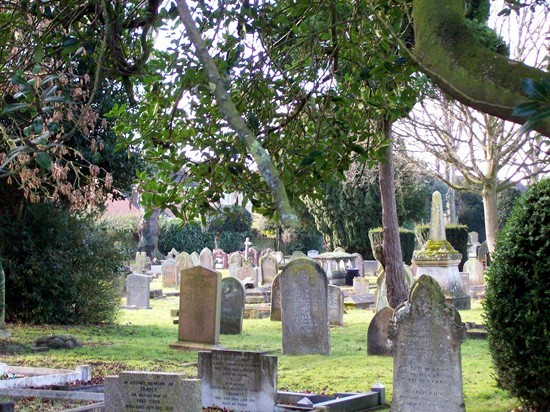 |
|
Three views of the cemetery from the main road
into Bourne. |
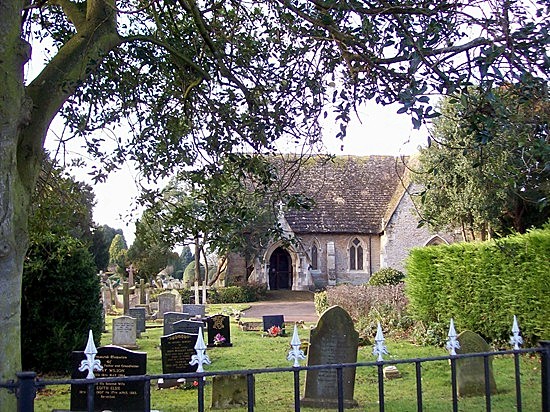 |
|
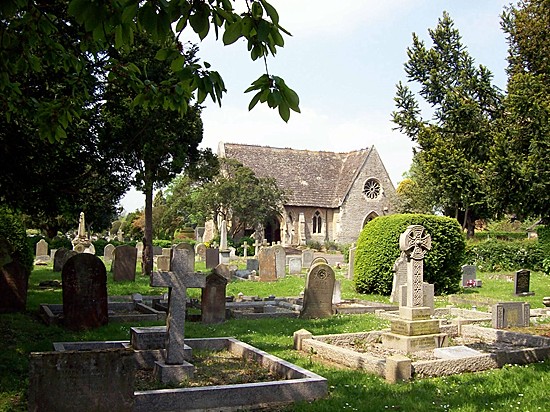 |
|
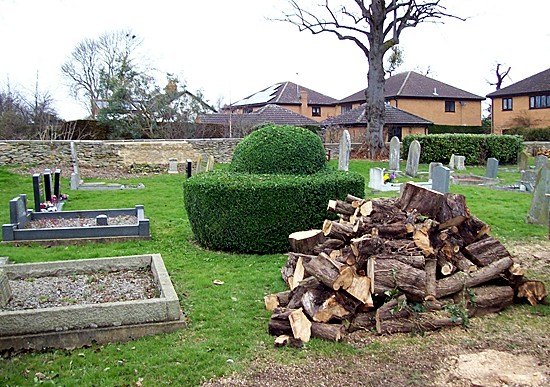 |
|
Extensive work on maintaining the trees and
shrubs in the cemetery was carried out in February 2013 following
a detailed survey by a tree surgeon who inspected all specimens
that were not included in the regular maintenance regime. Many
trees came from saplings that had not been spotted and pulled out,
trimmed or cared for, and over the years had become either a
nuisance, unsightly, detracted from the general ambiance of the
cemetery or were encroaching on graves. Some had also become a
safety hazard with too many dead branches or were too close to
walls or other permanent features. "The council decided that it
was better to have fewer but nicer specimens that could be
properly maintained", explained Mrs Nelly Jacobs, clerk to the
town council. |
|
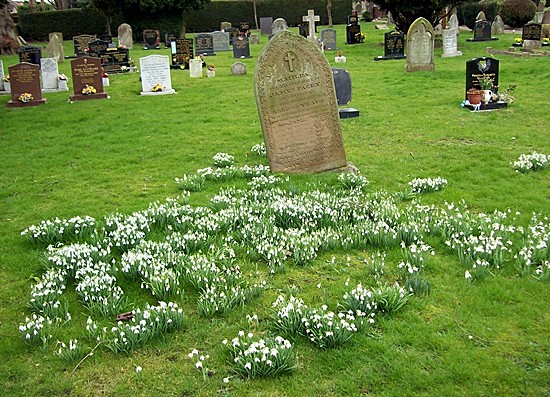 |
|
Amid the dead from this town springs new life as snowdrops
colonise the ground around their last resting place. Patches of
them can be found around the town cemetery in South Road, Bourne,
where conditions are conducive to their growth and so they soon
spread beneath the trees and between graves. Here, large numbers
have taken over on the plot occupied by James Pacey of Cawthorpe,
whose tombstone tells us that he died on 7th April 1903, aged 77,
and his beloved wife Matilda, who had predeceased him, passed away
on 23rd August 1898, aged 71. Both are now long forgotten and the
delicate flowers that bloom over their remains will also soon be
gone, a reminder of the fragile hold we all have on life. |
|
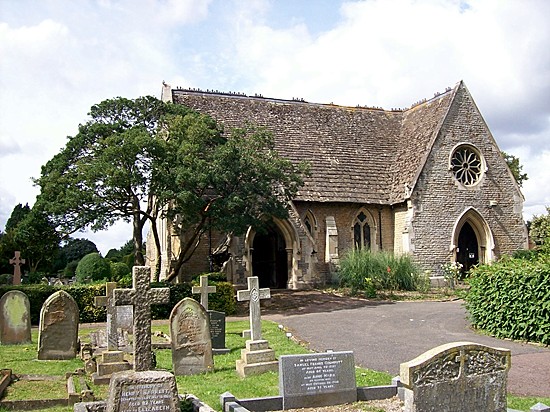 |
|
After six years of negotiations, Bourne Preservation Trust has
still not been given the key of the door to enable restoration
begin and as a result, the Victoria chapel continues to
deteriorate. |
|
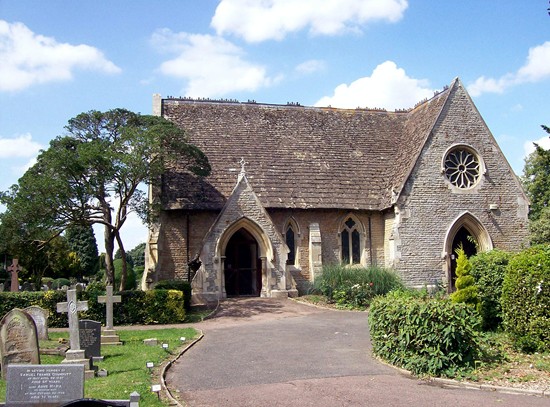 |